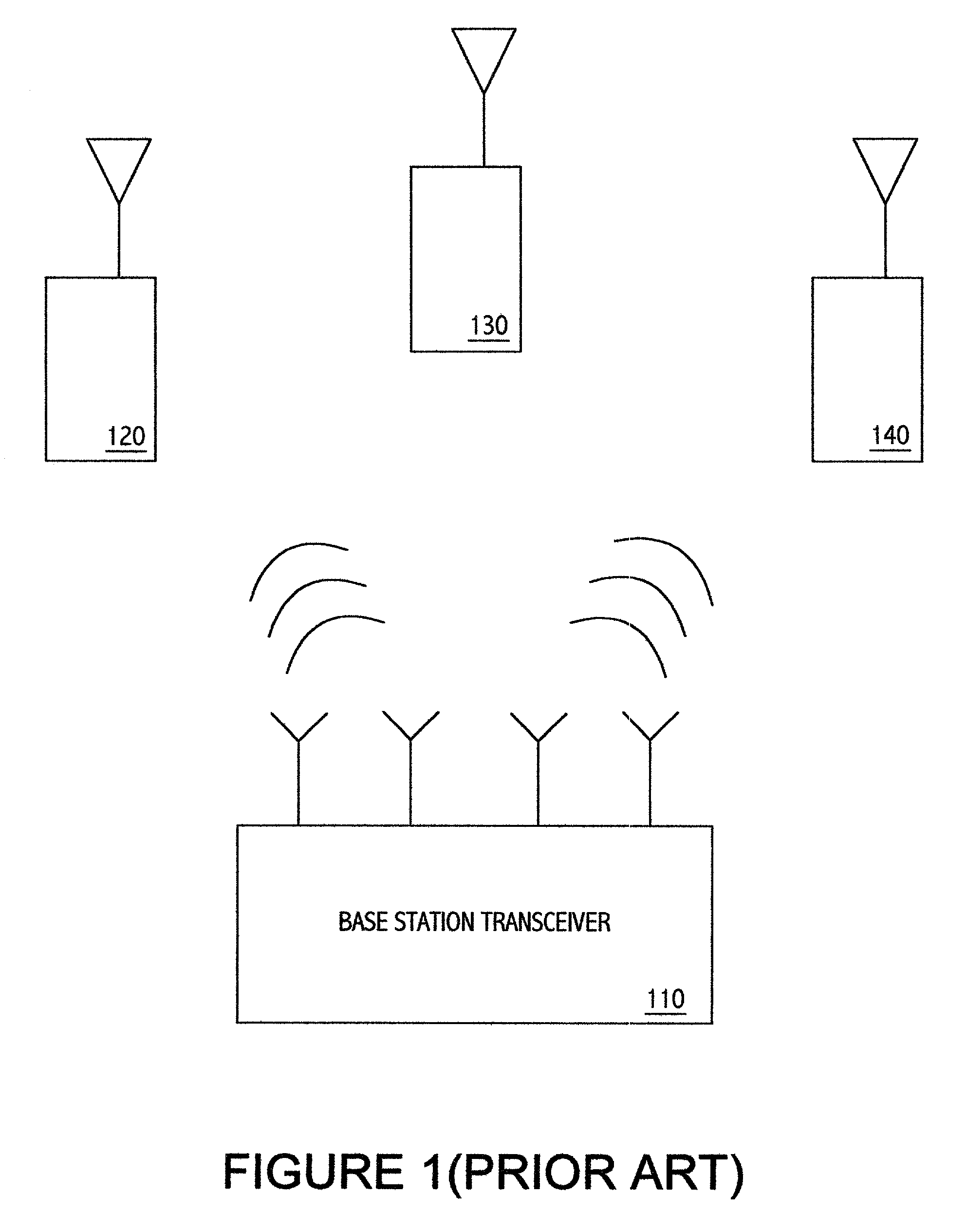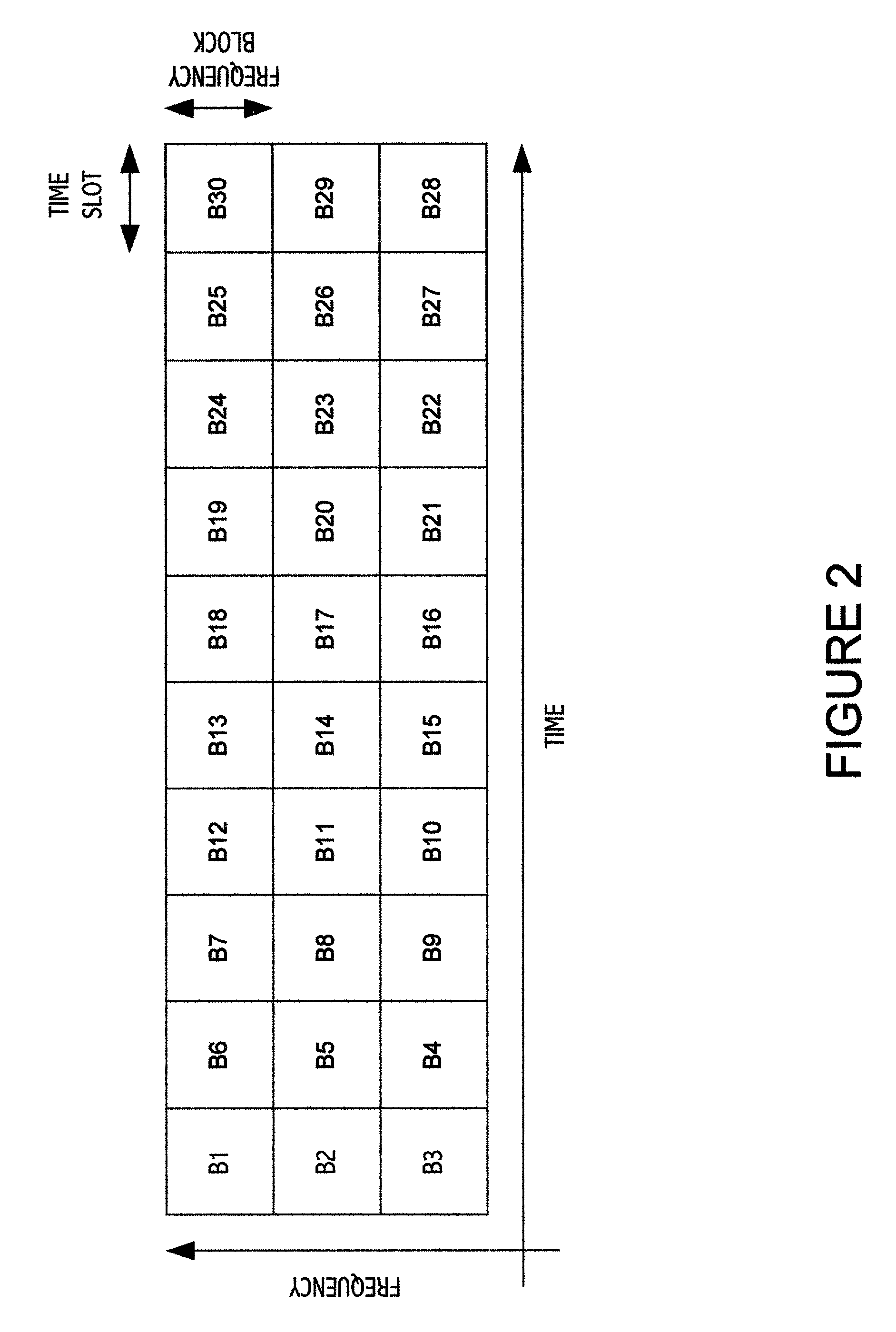Management and scheduling of data that is wirelessly transmitted between a base transceiver station and subscriber units
a wireless transmission and data technology, applied in the field of wireless communication, can solve the problems of insufficient reliability of wireless systems, more complex scheduling or mapping, limited bandwidth of available transmission frequencies, etc., and achieve the effect of minimizing the number of rts signals required and efficient management of transmission scheduling
- Summary
- Abstract
- Description
- Claims
- Application Information
AI Technical Summary
Benefits of technology
Problems solved by technology
Method used
Image
Examples
Embodiment Construction
[0031]As shown in the drawings for purposes of illustration, the invention is embodied in an apparatus and a method for managing and scheduling wireless transmission of data blocks between at least one antenna of a base transceiver station and multiple subscriber units. The scheduling generally includes maintaining data queues of the data blocks, and assigning frequency blocks and time slots to each of the subscriber units for receiving or transmitting data blocks.
[0032]As previously described, an embodiment of the invention includes wireless communication between at least one base transceiver station and subscriber units. The description of the invention will include two-way communication. That is, information is transmitted from the base transceiver station to the subscriber units (down link transmission), and information is transmitted from the subscriber units to the base transceiver station (up link transmission).
[0033]The description of the invention includes base transceiver ...
PUM
 Login to View More
Login to View More Abstract
Description
Claims
Application Information
 Login to View More
Login to View More - R&D
- Intellectual Property
- Life Sciences
- Materials
- Tech Scout
- Unparalleled Data Quality
- Higher Quality Content
- 60% Fewer Hallucinations
Browse by: Latest US Patents, China's latest patents, Technical Efficacy Thesaurus, Application Domain, Technology Topic, Popular Technical Reports.
© 2025 PatSnap. All rights reserved.Legal|Privacy policy|Modern Slavery Act Transparency Statement|Sitemap|About US| Contact US: help@patsnap.com



